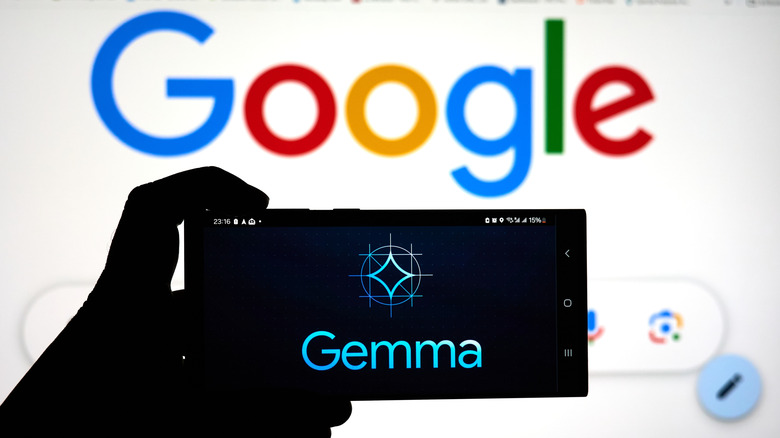An Open Google AI Model May Have Helped Discover A New Therapy For Cancer
One of the expectations related to AI tech is that advanced artificial intelligence may improve human life in profound ways once it's able to assist with breakthrough discoveries or come up with innovations on its own. Medicine is one place where AI assistance might help scientists discover new drugs that can treat specific conditions. But it turns out we don't have to wait for the next-generation version of frontier AI to advance medical research. Google on Wednesday announced a major discovery concerning cancer therapy. In partnership with researchers from Yale University, Google developed a model called Cell2Sentence-Scale 27B (C2S-Scale), built on the Gemma open models, that may have helped discover a potential therapy for cancer. That said, this is not the first time AI has shown its prowess in medicine — Robin AI has also found a potential cure for blindness.
Gemma is Google's family of open-source AI models built on the same tech as Google Gemini. Some Gemma models can run on computers and phones. C2S-Scale is a foundation model designed to understand individual cells, which Google is making available to others. C2S-Scale helped researchers generate a new hypothesis about cancer cellular behavior. The scientists successfully tested the findings in lab experiments. Clinical trials will need to further validate the cancer therapy proposal. If successful, the findings powered by Gemma may lead to new therapies for cancer.
How the Gemma model helped find a new cancer therapy
The researchers used the custom C2S-Scale model to find drugs that could help turn tumors from "cold" to "hot." These terms refer to the way a tumor might appear to the body's immune system. A cold tumor cell would not show as many antigens on the exterior, so it might become invisible to immune cells that would fight it. Google and the Yale researchers gave C2S-Scale a specific task: "Find a drug that acts as a conditional amplifier, one that would boost the immune signal only in a specific 'immune-context-positive' environment where low levels of interferon (a key immune-signaling protein) were already present, but inadequate to induce antigen presentation on their own."
The researchers created a dual-context virtual screen for the AI to find candidates. The two contexts were "Immune-Context-Positive," where the model saw real-world samples with intact tumor-immune interactions and low-level interferon; and "Immune-Context-Neutral," where the model saw isolated cell-line data with no immune context.
The C2S-Scale model looked at over 4,000 drugs to find which ones would boost antigen presentation (turning from cold to hot) only in the first context. That's how the AI identified potential candidates, including 10 to 30% of drugs that were known from previous literature. Google said the remaining candidates were "surprising hits," including a drug called silmitasertib (CX-4945).
The lab tests proved the AI hypothesis is correct
According to Google, the model "predicted a strong increase in antigen presentation when silmitasertib was applied in the 'immune-context-positive' setting, but little to no effect in the 'immune-context-neutral' one." This was a novel therapy idea for a known drug, and a surprise for the researchers. Silmitasertib is a CK2 inhibitor. While CK2 may also act as a modulator of the immune system, it has not been reported that using silmitasertib to inhibit it might help boost immune response in cancer patients. If accurate, the association of silmitasertib and interferon may improve cancer immunotherapy by making tumor cells more visible to the immune system, which can destroy them.
The researchers tested the hypothesis in the lab, using human neuroendocrine cell models that the AI did not see during testing. The experiments showed that silmitasertib combined with low-dose interferon produced a roughly 50% increase in antigen presentation. Using either drug alone did not offer comparable results. Silmitasertib alone had no effect, while interferon showed a modest effect.
Teams at Yale are already exploring the new mechanism found with the help of the Gemma-based AI model, and looking at other AI-generated predictions tied to immune contexts. The new therapy can't be used until clinical trials show the proposed therapy works in patients and is safe to use. Other researchers looking to use C2S-Scale for similar projects can get started by using Google's resources.


